The NASCAR All-Star Race is an annual non-championship exhibition race featuring NASCAR Cup Series drivers. Eligibility includes race winners from the previous and current season, past All-Star Race winners, previous Cup Series champions, winners of the All-Star Open stages, and a fan vote winner. The race has undergone several name changes over the years due to sponsorship.
1961: Race of Champions: Precursor to the All-Star Race
The NASCAR All-Star Race traces its roots back to the non-championship Race of Champions held at Daytona International Speedway from 1961 to 1963. This 10-lap, 25-mile event was part of Speedweeks and, like the early All-Star Races, featured only winners from the previous season.
1963: Race of Champions: Precursor to the All-Star Race
The NASCAR All-Star Race traces its roots back to the non-championship Race of Champions held at Daytona International Speedway from 1961 to 1963. This 10-lap, 25-mile event was part of Speedweeks and, like the early All-Star Races, featured only winners from the previous season.
1984: The Inaugural Winston
The first running of The Winston, featuring twelve race winners from the 1984 NASCAR season, was held at Charlotte Motor Speedway. This 70-lap race, with a mandatory pit stop, took place the day before the Coca-Cola World 600 and included a $10,000 bonus for leading Lap 20, which was won by Terry Labonte.
1985: The Atlanta Invitational
In 1985, a 100-lap consolation race, the Atlanta Invitational, was held for drivers not eligible for The Winston. Benny Parsons emerged victorious in this race, which saw a limited participation of only thirteen drivers.
1985: The Inaugural NASCAR All-Star Race
The first NASCAR All-Star Race, then known as "The Winston", was held in 1985 at Charlotte Motor Speedway.
1985: The First Race at Charlotte
The inaugural NASCAR All-Star Race was held at Charlotte Motor Speedway in 1985, setting the stage for a long-standing tradition.
1986: A Year at Atlanta
In 1986, the NASCAR All-Star Race was held at Atlanta Motor Speedway, marking a departure from its usual venue at Charlotte Motor Speedway.
1986: Move to Atlanta International Raceway
The Winston moved to Atlanta International Raceway in 1986, adopting a 200-kilometer, 83-lap format on Mother's Day. The race featured mandatory green flag pit stops and eligibility limited to 1985 season winners. Geoffrey Bodine, the highest-placed non-winner in the 1985 final points standings, was included to ensure a 10-car field.
1989: Mandatory Pit Stop Introduced in Qualifying
Starting in 1989, a mandatory four-tire pit stop during the three-lap qualifying run was implemented for the All-Star Race. Teams could choose to pit on either the first or second lap.
1989: Qualifying Format Changes
The year 1989 saw a change in the qualifying format for The Winston. Instead of the previous format, a three-lap time trial was implemented, where the fastest lap time and a quick two-tire pit stop became the determining factors for starting positions.
1990: ABC Broadcasts the Race
In 1990, ABC took on the responsibility of broadcasting The Winston, showcasing the event to a wider audience.
1990: Automatic Berths for Race Winners
Starting in 1990, automatic berths for The Winston were given to drivers and owners who had secured race victories during that year.
1991: Qualifying and Open Format Changes
In 1991, two key changes were implemented. Automatic berths were granted exclusively to drivers and owners who had won races in 1990 and 1991 leading up to The Winston. Additionally, The Winston Open was shortened to 50 laps, with the winner securing an automatic spot in the main event. To ensure a 20-car field, top finishers from the Open would advance until the quota was met.
1991: CBS and the NASCAR Legends Race
The year 1991 saw CBS broadcast both The Winston Open and The Winston. The NASCAR Legends Race, an exhibition race featuring retired NASCAR champions and stars, was also held on a quarter-mile oval at Charlotte Motor Speedway. Elmo Langley emerged victorious in this special event.
1992: Automatic Invitations for Former Champions
A new rule was introduced in 1992 granting former NASCAR Champions automatic invitations to compete in The Winston, adding another layer of prestige to the event.
1992: Saturday Night Lights and The Nashville Network
In 1992, The Winston moved to Saturday night and was broadcast live on The Nashville Network. The controversial 10-lap shootout format was reintroduced, and The Winston Open was condensed to a 30-lap format. Notably, this year marked the first time a superspeedway race was held under the lights, culminating in a dramatic finish with Davey Allison and Kyle Petty battling for the win. Allison, despite a crash at the finish line, was declared the victor but spent the remainder of the evening in the hospital.
1994: Geoff Bodine's Victory with Hoosier Tires
In 1994, Geoff Bodine secured a win for Hoosier tires, marking the only time a tire brand other than Goodyear won the race. The race also saw numerous crashes, including a significant one involving Ernie Irvan.
1995: Dale Earnhardt's Trend-Setting Paint Scheme
In 1995, Dale Earnhardt introduced a special paint scheme for his car, which set a trend in NASCAR.
1996: NASCAR Changes Procedure after Michael Waltrip's Win
Following Michael Waltrip's win in 1996, NASCAR changed the race procedure, reverting to a format featuring previous race winners and adding the preceding year's race-winning drivers.
1996: Waltrip's Historic Win
Michael Waltrip made history in 1996 by becoming the first driver to win the All-Star race after qualifying through the Open.
1997: Jeff Gordon's Win with the "T-Rex" Car
Jeff Gordon won the 1997 race with his "T-Rex" car, featuring a Jurassic Park: The Ride paint scheme. Its dominance led NASCAR to ban it from further competition.
1997: Continued Use of Revised Procedure
NASCAR continued to use the revised procedure for the 1997 race, ensuring a more competitive field based on previous race performance.
1998: No Bull 25's Determine Starting Lineup
From 1998 to 2000, qualifying races called "No Bull 25's" determined the starting lineup for the All-Star Race.
1998: Introduction of No Bull 25 Shootout for Qualifying
In 1998, qualifying for The Winston Open was changed to the No Bull 25 Shootout, with twin sprint races determining the starting lineup based on practice speeds.
1998: Green Flag Laps Only for All Segments
In 1998, the race format was adjusted so that only green flag laps would count in all segments, emphasizing the importance of clean racing and minimizing the impact of cautions.
1998: Restoration of Inversion and Open Pit Road Rules
The elimination format was removed, and rules from 1998-2001, including a random inversion and an open pit road for the final break, were reinstated.
1999: Lowe's Motor Speedway
Charlotte Motor Speedway was renamed to Lowe's Motor Speedway in 1999, reflecting a significant sponsorship deal.
2000: Addition of "No Bull 5 Sprint" Last-Chance Race
A 16-lap "No Bull 5 Sprint" last-chance race was added in 2000, giving drivers who didn't qualify in The Winston Open another opportunity to compete in The Winston.
2000: No Bull 25's Determine Starting Lineup
From 1998 to 2000, qualifying races called "No Bull 25's" determined the starting lineup for the All-Star Race.
2000: Continued Use of No Bull 25 Shootout
The No Bull 25 Shootout continued to be used for qualifying for The Winston Open in 2000, maintaining a focus on speed and performance during practice sessions.
2001: Reversion to Single-Car Qualifying
In 2001, The Winston Open reverted to single-car qualifying, with the best of two laps determining the starting order.
2001: Television Coverage Moves to FX and Qualifying Format Changes
In 2001, television coverage moved to FX, and the qualifying format was changed. The pit stop was moved to the start of qualifying, requiring a four-tire change instead of two.
2001: One-Lap Qualifying Returns
In 2001, the All-Star Race reverted to one-lap qualifying, utilizing the best single lap time out of two attempted laps.
2001: Inclusion of Race Winning Drivers, Former Champions, and Past Winston Winners
In 2001, the field included race-winning drivers and owners from the previous year, all former Cup titleholders, the past five winners of The Winston, and the winner of the qualifying races.
2001: Eligibility Rule Change
Prior to 2001, only champions from the past five All-Star Races were automatically eligible. This rule was changed to include winners from the past ten years.
2001: Crew Members Introduced During Driver Introductions
Starting in 2001, crew members were introduced along with drivers during the driver introduction ceremonies, highlighting the importance of the entire team in NASCAR.
2001: Continued Use of Restored Rules
The restored rules, including the inversion and open pit road for the final break, continued to be used in the following years, adding strategic elements and unpredictability to the race.
2001: Two Segment Format Introduced
To address reckless driving in previous years, The Winston was restructured in 2001 into a two-segment format consisting of 50 and 20 laps, totaling 70 laps, a format that would remain in place until 2001.
2001: Twin 25-Lap Races and Return to Qualifying
Until 2001, the starting grid for the Winston Open was determined by twin 25-lap races, with lineups based on practice speeds. In 2001, the format reverted to two-lap qualifying for the Winston Open.
2002: Mandatory Pit Stop Rule Change
After Frank Stoddard exploited a loophole in the mandatory pit stop rule in 2002, NASCAR changed the rule to mandate tire stops at a specific point in the race.
2002: Top 20 Advance, 10 Advance to Third Segment
In 2002, only the top 20 cars from the first segment advanced to the second, and only 10 cars moved on to the third segment, increasing the intensity of each stage.
2002: "Survival of the Fastest" Elimination Format Introduced
Inspired by the reality show "Survivor," a new elimination format called "Survival of the Fastest" was introduced in 2002. The final segment also returned to 20 laps, making tire wear a more significant factor.
2002: Continued Use of "No Bull 5 Sprint"
The "No Bull 5 Sprint" continued to be a part of the race format in 2002, providing an additional layer of excitement and opportunity for drivers to make it into the main event.
2002: Elimination of No Bull Sprint
The "No Bull Sprint" last-chance race was removed from the race format after 2002.
2003: The End of R.J. Reynolds Sponsorship
In 2003, R. J. Reynold's sponsorship of The Winston concluded, marking a significant shift in the event's history.
2003: The Winston Open Format Change
In 2003, The Winston Open became a 20-lap race with pit stops followed by a 10 green flag lap sprint, adding more strategic elements to the qualifying race.
2003: Top 20 Advance, 12 Advance to Third Segment
The format continued in 2003, with the top 20 cars advancing and 12 cars (originally planned to be 14 but reduced due to crashes) moving on to the third segment.
2004: Fan Vote Introduced
Nextel introduced a fan vote in 2004, allowing spectators, internet users, and Sprint cellphone users to vote for an additional driver to compete in the Showdown and potentially qualify for the All-Star Race.
2004: Nextel Takes Over Sponsorship, Name Changed to Nextel All-Star Challenge
With Nextel becoming the title sponsor in 2004, the race was renamed The Nextel All-Star Challenge. The format was adjusted slightly while maintaining the 90-lap distance.
2004: NASCAR Adopts the "All-Star" Name
With Nextel's arrival as the title sponsor in 2004, the "All-Star" name was officially adopted for the race, a designation that has continued under subsequent sponsors.
January 23, 2007: Announcement of Pit Crew Challenge Benefits
During the Media Tour in Charlotte on January 23, 2007, NASCAR announced that the winning pit crew of the annual Pit Crew Challenge would receive $10,000 per member and the driver would get the first choice of pit box.
May 16, 2007: Ryan Newman's Crew Wins Pit Crew Challenge
Ryan Newman's pit crew won the Pit Crew Challenge held on May 16, 2007, at Charlotte Bobcats Arena, earning them a significant financial reward and a strategic advantage for Newman in the All-Star Race.
May 19, 2007: Major Changes to the Race Format
The 2007 race saw significant changes to the format, signaling a shift in the All-Star Race's structure and strategy.
2007: Return to 20-lap Segments and 10-minute Break
The 2009 race reverted to the 2007 format with 20-lap segments for the second and third segments. A ten-minute break after the third segment allowed for car adjustments before the final 10-lap shootout.
2008: Roman Numerals and Fan Vote Changes
In 2008, the All-Star Race began using Roman numerals in its official name, starting with "Sprint All-Star Race XXIV". Additionally, the fan vote rules were revised, with votes coming from race attendees, Sprint retail locations, and Sprint subscribers.
2008: The Showdown
The All-Star Open, previously known by other names, was rebranded as "The Showdown" in 2008.
2008: Impact of Expanded Segments
The expanded 25-lap segments in the 2008 race increased the importance of tire wear and fuel mileage, adding a new layer of strategy to the event.
2008: Roman Numerals Briefly Used for Race Identification
The practice of identifying each All-Star Race with Roman numerals was introduced in 2008 but discontinued the following year.
2009: Return to Charlotte Motor Speedway
In 2009, Lowe's Motor Speedway reverted back to its original name, Charlotte Motor Speedway.
2009: Double-File Restarts Adopted
The popularity of double-file restarts during the race led NASCAR to adopt the rule for the second half of the 2009 season.
2012: Five Segment Format Introduced with Incentive and Controversy
In 2012, the All-Star Race introduced a five-segment format, with the first four segments being 20 laps each and the final segment a 10-lap sprint. This format aimed to incentivize winning segments, as the top four segment winners would get advantageous starting positions in the final segment. However, some drivers strategically rode in the back after winning a segment, drawing criticism and leading to a format change where the final segment lineup was based on average finish across all four segments.
2012: Slight Twist to the Format
The 28th running of the All-Star Race in 2012 introduced a slight twist to the existing format, suggesting ongoing efforts to refine and improve the event.
2014: Group Qualifying Introduced, Showdown Moved to Friday
In 2014, NASCAR adopted a group qualifying format for its races, but the All-Star Race retained its single-car two-lap qualifying. The Showdown race, which determined additional All-Star Race qualifiers, was moved to Friday along with the Fan Vote announcement to allow those drivers more practice and qualifying time.
2014: Showdown Moved and Qualifying Format Changes
In 2014, the Showdown race was moved to the night before the All-Star Race. Charlotte Motor Speedway president, Marcus Smith, also announced a new qualifying format for the main event, taking place shortly before the race.
2014: Segment Length Increased
In 2014, the five-segment format was retained but each segment's length was increased to 25 laps, totaling 125 laps for the first four segments. The final segment remained a 10-lap sprint.
November 2015: Jeff Gordon's Martinsville Win Impacts 2016 All-Star Race
Jeff Gordon's win at Martinsville in November 2015 granted him eligibility for the 2016 All-Star Race. However, his subsequent retirement created a vacancy, leading to a rule change where the fan vote runner-up also advanced to the main event.
2015: Lifetime Exemption and No Bull Sprint Return
In 2015, NASCAR modified the All-Star Race eligibility rules, replacing the ten-year exemption for past champions with a lifetime exemption for full-time drivers who had won the All-Star Race or the Cup Series. The Showdown race revived the "No Bull Sprint" format, featuring three segments with varying rules and advancement criteria.
2016: Two Fan Vote Winners Advance Due to Eligibility Quirk
In 2016, the fan vote allowed two drivers to advance to the main event instead of one. This occurred because of Jeff Gordon's retirement, who was eligible due to his November 2015 Martinsville win, creating a vacancy that was filled by the runner-up in the fan vote. This rule ensured 20 drivers would participate in the All-Star Race.
2016: Showdown and Fan Vote Format Changes
The 2016 Showdown race saw changes to the "No Bull Sprint" format, adding a third 10-lap segment and mandating a two-tire pit stop between segments. Each segment winner advanced directly to the All-Star Race.
2016: Farewell to "The Showdown"
The year 2016 marked the end of the era of "The Showdown", as the All-Star Open reverted to its original name.
2017: Name Change to Sprint Showdown and Return of "Open" Qualifier
The qualifying race was renamed the Sprint Showdown, and with the Monster Energy sponsorship in 2017, the qualifier reverted to the "Open" name. Prize money remained unchanged.
2019: Farewell to Charlotte Motor Speedway
In 2019, the NASCAR All-Star Race was held for the last time at Charlotte Motor Speedway, ending a long-standing tradition.
2020: Relocation to Bristol Motor Speedway
Due to the COVID-19 pandemic and the inability to accommodate fans at Charlotte Motor Speedway, the All-Star Race was relocated to Bristol Motor Speedway on July 15, 2020.
2023: North Wilkesboro Speedway to Host All-Star Race
In celebration of NASCAR's 75th anniversary in 2023, the All-Star Race will be held at the historic North Wilkesboro Speedway.
2025: North Wilkesboro to Host Again
Despite two consecutive races with limited lead changes, North Wilkesboro Speedway is set to host the All-Star race again in 2025.
Mentioned in this timeline
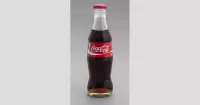
Coca-Cola is a globally recognized cola soft drink produced by...
CBS is a major American commercial broadcast television and radio...

A car also known as an automobile is a wheeled...
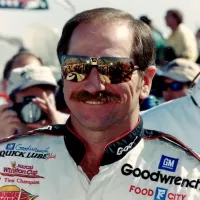
The Intimidator The Man in Black or Ironhead as he...
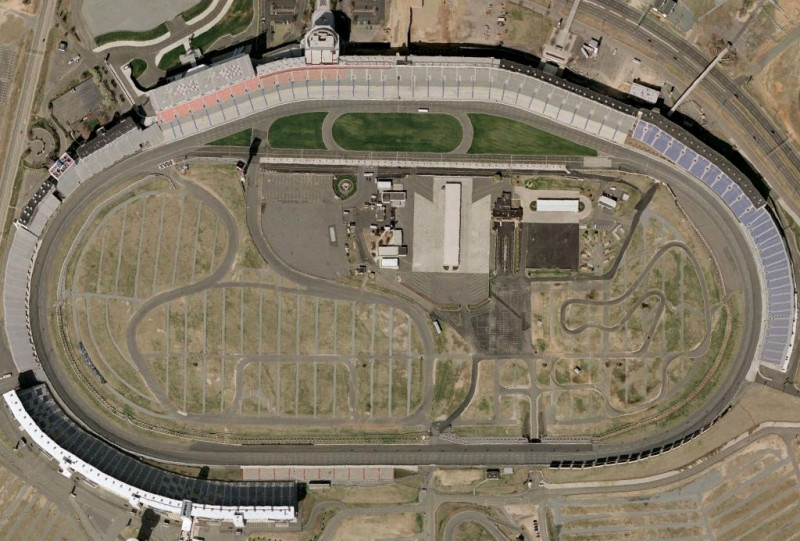
Charlotte Motor Speedway is a -mile quad-oval racetrack located in...
Daytona International Speedway located in Daytona Beach Florida is a...
Trending
Montesano is a city located in Grays Harbor County Washington and serves as the county seat According to the census...

2 hours ago 10-Month-Old Girl Found Safe in Charlotte After Amber Alert; Suspects Arrested

2 months ago Kyle Tucker Player Props and Chicago Cubs' Distrust in Wild Card Series

5 months ago Francis Ngannou Returns to UFC Atlanta, Kickboxing Fight Challenged
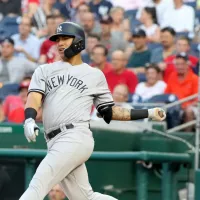
1 month ago Gleyber Torres Leads Tigers in ALDS Game 1; Greene & Torkelson Prop Bets
2 days ago Switzerland Secured US Trade Deal by Lobbying Trump with Gifts and Diplomacy
Popular

XXXTentacion born Jahseh Dwayne Ricardo Onfroy was a controversial yet...

Cristiano Ronaldo often nicknamed CR is a Portuguese professional footballer...

Candace Owens is an American conservative political commentator and author...

William Franklin Graham III commonly known as Franklin Graham is...
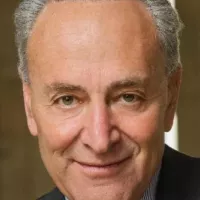
Chuck Schumer is the senior United States Senator from New...

Vivienne Westwood was a highly influential English fashion designer and...